mercredi, 16 avril 2025
7 avril 2025: un "Lundi noir"

7 avril 2025: un "Lundi noir"
Leonid Savin
Le 7 avril 2025, des fluctuations brusques des cours des actions et des prix de diverses ressources (y compris le pétrole et le gaz) ont été ressenties dans tous les pays. Leurs indicateurs ont chuté et ont varié de six à trente pour cent. Plusieurs bourses dans différents pays ont fermé plus tôt en raison des craintes d'une baisse continue des indices. Les cryptomonnaies ont suivi le marché boursier traditionnel et se sont effondrées en moyenne de dix pour cent. Des trillions de dollars ont ainsi « brûlé » lors des échanges. Seule une légère hausse a été observée sur les bourses internationales pour l'euro, le dollar américain, l'or et l'argent. Ces interrelations ont encore une fois montré où se dirigent les investisseurs internationaux en cas de situations floues sur les marchés boursiers.
Apparemment, la clarté ne semble pas se profiler à l'horizon. Les analystes financiers ont prédit un maintien de la volatilité à un niveau d'environ 10 % dans un avenir proche.
Cependant, contrairement à de nombreux « jours noirs » précédents dans l'histoire, la tempête financière actuelle était attendue à l'avance.
La directrice du Fonds monétaire international, Kristalina Georgieva, a déclaré la semaine dernière que les mesures tarifaires « présentent clairement un risque significatif pour les perspectives mondiales dans une période de faible croissance économique. Il est important d'éviter des mesures qui pourraient causer encore plus de dommages à l'économie mondiale. Nous encourageons les États-Unis et leurs partenaires commerciaux à travailler de manière constructive pour résoudre les tensions commerciales et réduire l'incertitude ».
Il était également prévu que les exportations américaines, en particulier en provenance des secteurs de l'agriculture et de l'élevage, diminueraient à court terme, alors que les partenaires commerciaux réduiraient leurs importations. Les producteurs américains souffriraient d'une baisse des revenus — comme cela s'est produit avec les agriculteurs américains de soja pendant la guerre commerciale de 2018-2019 — tandis que d'autres pays s'efforceraient de combler le vide laissé par les États-Unis.
Les mesures de rétorsion de la part d'autres pays pourraient également entraîner une augmentation des tarifs existants aux États-Unis, ce qui nuirait aux consommateurs, car les entreprises devraient soutenir des coûts sous la forme de prix plus élevés. On s'attend à ce que le ménage américain moyen soit déjà confronté à une augmentation des dépenses de plus de 1200 dollars par an. L'imposition de tarifs de réciprocité a également suscité d'autres inquiétudes, notamment l'impact potentiel sur le marché boursier américain et la diminution de la confiance des alliés dans le leadership économique des États-Unis.
Et cela se passe maintenant.
Il y avait cependant un aspect intéressant qui maintenait le suspense : les investisseurs et les dirigeants politiques s'efforçaient de déterminer si les tarifs de Trump faisaient partie d'un nouveau régime permanent ou d'une tactique de négociation visant à obtenir des concessions de la part d'autres pays.
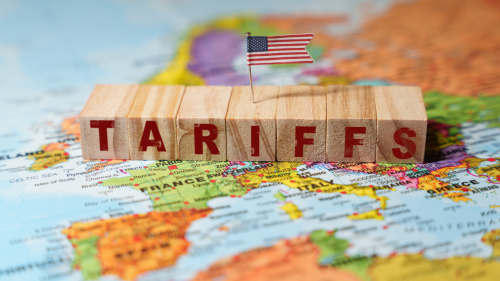
Il semble que les deux options soient possibles : Trump utilisera cette situation pour des négociations bilatérales ciblées, défendant les intérêts américains tout en représentant une tendance qui caractérisera son deuxième mandat présidentiel (avec la possibilité que cette politique se poursuive sous son successeur, J. D. Vance).
Il n'est pas surprenant qu'il ait déclaré que l'UE devrait également payer les États-Unis en remboursant les dettes, et que la Chine devrait équilibrer son commerce extérieur en éliminant le déficit existant vis-à-vis des États-Unis. Cela rappelle déjà les vieux mécanismes de la Realpolitik, et non la magie noire du turbocapitalisme ou même du zeta-capitalisme (terme utilisé pour décrire une économie liée au secteur technologique de l'information de haute technologie, qui inclut les principales entreprises informatiques mondiales).
Cependant, puisque tous ces impulsions précédentes venaient des États-Unis, on peut se demander si Donald Trump ne nuira pas à son propre pays avec ses mesures tarifaires.
Les partisans de l'économie libérale mondiale affirmaient déjà avant l'entrée en vigueur des tarifs qu'ils conduiraient à un déclin de l'économie américaine et même à un impact sur le dollar. Le président de la Réserve fédérale américaine, Jerome Powell, a averti d'une possible augmentation de l'inflation. Une réunion fermée du conseil de la Réserve fédérale était prévue pour lundi soir.
Cependant, avec l'effondrement des marchés boursiers, cela ne s'est pas encore produit. Bien qu'il ne faille pas exclure que l'économie américaine souffre également pendant cette période de transition, Donald Trump lui-même a reconnu qu'avec l'interdépendance actuelle, cela pourrait se produire à la première étape. Il a comparé l'introduction de tarifs à des mesures médicales qui permettraient de redresser l'économie nationale.
Il est soutenu par des économistes conservateurs aux États-Unis, qui soulignent que « institutionnellement, le système de commerce international a été créé pour nous tromper. Ils augmentent systématiquement les tarifs à notre encontre, mais, plus important encore, il s'agit d'une fraude non tarifaire. Ce sont des taxes sur la valeur ajoutée. Ce sont les manipulations monétaires, le dumping, les subventions à l'exportation, les normes frauduleuses qui empêchent l'importation de nos produits agricoles et de nos voitures au Japon. Toutes ces actions de pays étrangers visent clairement à nous tromper et relèvent des sanctions de l'Organisation mondiale du commerce. Donc, le président Trump dit que sous sa présidence, plus rien ne se produira. Et c'est exactement dans cette direction que nous nous dirigeons. Nous avançons vers une Amérique forte qui fera à nouveau tout par elle-même ».
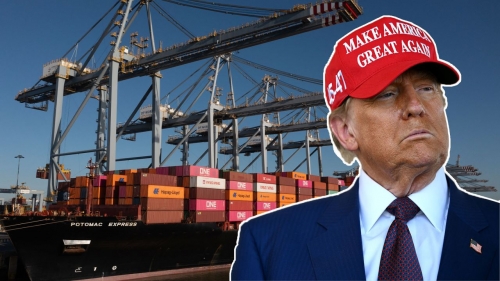
C'est exactement ce à quoi visaient les mesures de Donald Trump — la réorganisation de l'industrie nationale et les priorités pour les entreprises américaines. D'ailleurs, même les libéraux ont noté qu'au début d'avril, 228.000 nouveaux emplois avaient été créés aux États-Unis. C'est un chiffre assez élevé, ce qui est évident même pour ceux qui comprennent peu les indicateurs économico-financiers. Bien qu'une croissance moins significative sur le marché du travail ait été anticipée auparavant.
Dans cette histoire, il est frappant que toutes ces mesures, qui ont conduit aux conséquences actuelles, aient été prises délibérément, contrairement aux précédents effondrements liés à des intérêts clairement spéculatifs et des bulles excessivement gonflées. De plus, le gouvernement américain a officialisé son opposition non seulement aux élites financières libérales transnationales, mais même aux institutions qu'il a lui-même créées. Les structures de la Banque mondiale et de l'ONU, préoccupées par la crise actuelle, sont soumises à des critiques sévères de la part de la nouvelle équipe de Donald Trump et de ses partisans conservateurs. Et leurs dirigeants déclarent en panique l'effondrement du système global des relations multilatérales.
Ainsi, il existe ici à la fois une idéologie politique (et cela s'appelle maintenant le trumpisme) et une composante géopolitique, car l'unité transatlantique est en train de se désagréger.
Et indépendamment des conséquences de l'effondrement des marchés boursiers, il est clair que, pour maintenir la stabilité des économies nationales (y compris en Russie), une autonomie suffisante par rapport au système mondial est nécessaire. La destruction du projet globaliste par Donald Trump mène, d'une manière ou d'une autre, à la création d'une multipolarité, y compris des pôles financiers. Le régime de sanctions nous a appris à agir de manière indépendante et à restaurer l'économie souveraine. Cette approche doit être préservée à l'avenir, même au niveau international, en menant à son terme l'ensemble du cycle des réformes patriotiques.
17:02 Publié dans Actualité, Economie | Lien permanent | Commentaires (0) | Tags : actualité, bourse, économie, donald trump, états-unis |  |
|  del.icio.us |
del.icio.us |  |
|  Digg |
Digg | ![]() Facebook
Facebook
lundi, 20 mai 2019
Les Bourses mondiales prises au piège dans un champ de mines
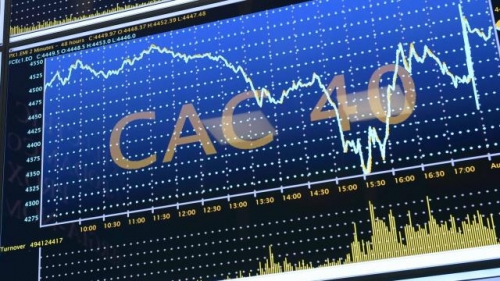
Les Bourses mondiales prises au piège dans un champ de mines
Marc Rousset
Ex: http://synthesenationale.hautetfort.com
Les Bourses mondiales jouent au yo-yo depuis deux semaines, au gré des rebonds de la guerre commerciale sino-américaine, des inquiétudes sur la croissance, avec en toile de fond de nombreux fondamentaux économiques qui sont toujours aussi catastrophiques. En fait, les marchés financiers sont périodiquement rattrapés par les réalités et la peur gagne du terrain. Le VIX (Volatility Index), appelé aussi indice de la peur, qui mesure la volatilité à Wall Street a progressé de plus de 25 %, ces derniers jours.
Après l’échec des pourparlers sino-américains et les hausses de droits de douane, la Chine n’a pas hésité, à son tour, à taxer 60 milliards de dollars d’importations américaines. Le ton devient de plus en plus belliqueux et la Chine se dit prête à mener cette guerre. Un accord est toujours possible d’ici quelques mois entre Trump, qui est en position de force, suite au déséquilibre commercial USA/Chine de 383 milliards de dollars en 2018, et Xi Jinping, mais ce ne sera qu’un accord de façade.
La réalité, c’est que la guerre commerciale et technologique, avec comme enjeu la domination du monde, a été déclarée par Trump et que rien ne pourra plus l’arrêter. Trump vient de surenchérir en tentant de neutraliser la société Huawei, acteur incontournable des réseaux mobiles et de la 5G. Trump souhaite priver l’équipementier chinois de la technologie américaine afin de l’asphyxier.
La Chine dispose, cependant, de l’arme atomique pour faire plier Trump, en vendant son énorme portefeuille de bons du Trésor américain qui s’élève à 1.130 milliards de dollars, soit 17,7 % de la dette publique américaine, ce qui entraînerait l’effondrement du dollar, mais en même temps la revalorisation du yuan, ce qu’a toujours voulu éviter Pékin, en maintenant un taux de change bas du yuan afin de favoriser ses exportations. Il faudrait aussi que la Chine ait préalablement réduit sa dépendance au marché américain. De plus, Pékin se tirerait une balle dans le pied, suite à la perte de valeur de ses obligations en dollars toujours détenues. La vente en masse d’obligations américaines par la Chine correspondrait à une guerre économique totale et à la mise à mort de Wall Street.
Au cours des quatre premiers mois de l’année 2019, selon l’agence Bloomberg, les entreprises chinoises ont fait défaut sur leurs obligations nationales pour un montant de 5,2 milliards d’euros, soit un chiffre trois fois supérieur à celui de 2018. Un krach obligataire n’est donc pas exclu en Chine, même si l’État chinois fera tout pour l’éviter.
En Italie, les taux d’emprunt de l’État sont repartis à la hausse après les déclarations suicidaires de Salvini sur le déficit : « Dépasser la limite de 3 % ? Il est de mon devoir de nous affranchir de quelques contraintes européennes qui affament des millions d’Italiens. Non seulement de la limite du déficit à 3 % du PIB, mais aussi des 130-140 % de la dette publique. Ce n’est pas un droit, c’est un devoir. » Salvini a déjà menacé, il y a quelques mois, de prendre le contrôle des réserves d’or du pays. Le résultat a été immédiat : la différence entre les taux d’emprunt à dix ans de l’État italien avec ceux du Bund allemand est monté à 2,92 %, son plus haut niveau depuis décembre 2018, lors du bras de fer avec Bruxelles.
Avec 0,1 % de croissance en 2019, dans un pays où les banques sont très fragiles et où le PIB par habitant stagne depuis dix-huit ans, le déficit italien pourrait atteindre 2,5 % en 2019 et 3,5 % en 2020. Suite aux tensions entre la Ligue et le M5S, l’Italie pourrait se diriger tout droit vers la chute du gouvernement en juin et un retour aux urnes le 29 septembre au plus tard. À noter que la crise italienne n’est que la partie visible de l’iceberg européen. Des menaces pèsent aussi sur le Portugal, la Grèce, l’Espagne et la France. En Grèce, on n’a fait que reporter les dettes de dix ans.
La BCE, elle, ruine les épargnants avec des taux d’intérêt ridicules, paie les banques avec des taux d’intérêt négatifs pour qu’elles prêtent à une économie atone, masque l’insolvabilité des États déficitaires qui, comme la France de Macron ne contrôle plus les dépenses publiques, préserve de la faillite un grand nombre d’entreprises non rentables et prépare l’opinion à une fuite en avant vers la création monétaire, ce qui conduira à l’hyperinflation et à l’écroulement final.
11:18 Publié dans Actualité, Economie | Lien permanent | Commentaires (0) | Tags : bourse, actualité, finances, économie |  |
|  del.icio.us |
del.icio.us |  |
|  Digg |
Digg | ![]() Facebook
Facebook
samedi, 17 septembre 2016
Keynes y la irracionalidad de los mercados
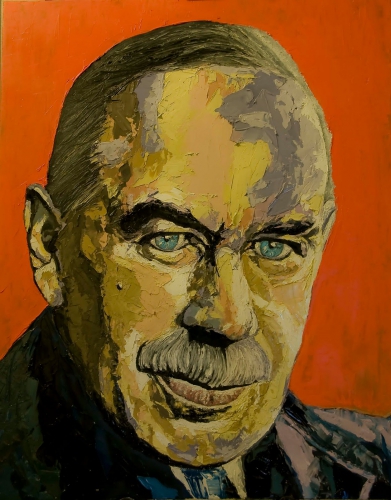
Keynes y la irracionalidad de los mercados
Por caos (Khaos o "vacío que ocupa un hueco en la nada") entendemos algo impredecible y que se escapa a la miope visión que únicamente pueden esbozar nuestros ojos ante hechos que se escapan de los parámetros conocidos pues nuestra mente es capaz de secuenciar únicamente fragmentos de la secuencia total del inmenso genoma del caos, con lo que inevitablemente recurrimos al término “efecto mariposa” para intentar explicar la vertiginosa conjunción de fuerzas centrípetas y centrífugas que terminarán por configurar el puzzle inconexo del caos ordenado que se está gestando y que tendría su plasmación en la famosa frase del iconoclasta John Kenneth Galbraiht.”Hay dos clases de economistas: los que no tenemos ni idea y los que no saben ni eso”.
El citado” efecto mariposa” trasladado a sistemas complejos como la Bolsa de Valores, tendría como efecto colateral la imposibilidad de detectar con antelación un futuro mediato pues los modelos cuánticos que utilizan serían tan sólo simulaciones basadas en modelos precedentes (Teoría de la Inestabilidad financiera de Minsky), con lo que la inclusión de tan sólo una variable incorrecta o la repentina aparición de una variable imprevista, provoca que el margen de error de dichos modelos se amplifique en cada unidad de tiempo simulada hasta exceder incluso el límite estratosférico del cien por cien, de lo que sería paradigma el próximo estallido de la actual burbuja bursátil, cumpliéndose una vez más la máxima de Keynes: “Los mercados pueden permanecer irracionales más tiempo del que tú puedes permanecer solvente”.
Génesis de la actual burbuja bursátil
La burbuja actual sería hija de la euforia de Wall Strett (y por extrapolación del resto de bolsas mundiales) tras las políticas monetarias de los grandes bancos centrales mundiales que han inundado los mercados con centenares de miles de millones de dólares y euros con la esperanza de relanzar la economía, más aún cuando las colocaciones sin riesgo ( deuda de EEUU o de Alemania) no retribuían nada a los inversionistas y estaría alimentada por los siguientes factores:
Racionalidad limitada
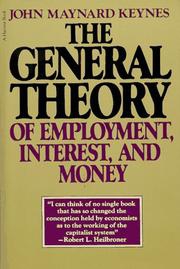 La desconexión con la realidad por parte de los inversores les llevaría a justificar la exuberancia irracional de los mercados, creándose un mundo virtual de especulación financiera que nada tendría que ver con la economía real (windhandel o negocio del aire) y que les lleva a extrapolar las rentabilidades actuales como un derecho vitalicio lo que unido a la pérdida de credibilidad de las agencias de calificación como Moody's al no haber predicho la crisis del 2002 y a la ausencia de control por parte de los reguladores, habría coadyuvado a que el mercado permaneciera insensible al recorte de rating de las compañías que cotizan en la bolsa y a los avisos de la Fed que por boca de su Presidenta Yanet Ellen habría advertido que “las valoraciones de las bolsas y los mercados de bonos son muy altas y que existen riesgos potenciales en ambos mercados”, Así, la certeza racional de la total retirada por la Fed de sus medidas de estímulo a la economía estadounidense y de la próxima subida de tipos de interés del dólar en el 2016 debería hacer que los inversionistas se vayan distanciado progresivamente de los activos de renta variable y que los bajistas se alzaran con el timón de la nave bursátil mundial.
La desconexión con la realidad por parte de los inversores les llevaría a justificar la exuberancia irracional de los mercados, creándose un mundo virtual de especulación financiera que nada tendría que ver con la economía real (windhandel o negocio del aire) y que les lleva a extrapolar las rentabilidades actuales como un derecho vitalicio lo que unido a la pérdida de credibilidad de las agencias de calificación como Moody's al no haber predicho la crisis del 2002 y a la ausencia de control por parte de los reguladores, habría coadyuvado a que el mercado permaneciera insensible al recorte de rating de las compañías que cotizan en la bolsa y a los avisos de la Fed que por boca de su Presidenta Yanet Ellen habría advertido que “las valoraciones de las bolsas y los mercados de bonos son muy altas y que existen riesgos potenciales en ambos mercados”, Así, la certeza racional de la total retirada por la Fed de sus medidas de estímulo a la economía estadounidense y de la próxima subida de tipos de interés del dólar en el 2016 debería hacer que los inversionistas se vayan distanciado progresivamente de los activos de renta variable y que los bajistas se alzaran con el timón de la nave bursátil mundial.
Euforia especulativa
Sin embargo, el proceso especulativo impulsa a comprar con la esperanza de sustanciosas ganancias en el futuro, lo que provoca una espiral alcista alejada de toda base factual y el precio del activo llega a alcanzar niveles estratosféricos hasta que la burbuja acaba estallando (crash) debido a la venta masiva de activos y la ausencia de compradores, lo que provoca una caída repentina y brusca de los precios hasta límites inferiores a su nivel natural (crack).
Incertidumbre sobre nivel suelo de los mercados bursátiles
Un inversor está dispuesto a pagar un precio por una acción si le reporta dinero en el futuro, por lo que el valor de dicha acción es el total de flujos esperados pero el nivel suelo de las Bolsas mundiales, (nivel en el que confluyen beneficios y multiplicadores mínimos), se situaría en la horquilla de los 14.000-15.000 puntos en Mercados Bursátiles como el Dow Jones, debido al riesgo de estancamiento económico secular que presentan las principales economías mundiales.
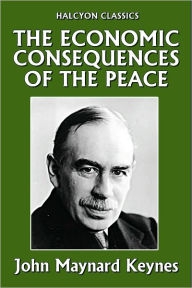 Estallido de la burbuja bursátil china
Estallido de la burbuja bursátil china
Los inversores han empezado a sentir el vértigo de la altura y a cuestionarse el estado de solvencia de las compañías y se espera que bajará el porcentaje de los resultados empresariales que se destinarán a dividendos así como el número de empresas que repartirán el mismo y la volatilidad es la nota dominante pues desde el pasado 21 de junio, el principal índice bursátil chino, el Shanghai Composite ha perdido un 50%, descenso que ha puesto fin a una capitalización de mercado valorada en 1,25 billones de dólares ante los temores de la comunidad inversora de que el Gobierno intente enfriar un repunte alimentado por la deuda que dura ya un año. Shanghai había ganado un 60% con respecto a principios de año porque los inversores creyeron que Pekín respaldaría el repunte para contribuir a luchar contra la ralentización de la economía que se ha contraído con respecto al crecimiento de dos dígitos de hace unos años y rozaría el 5%, por lo que es previsible una severa corrección de los índices bursátiles chinos hasta alcanzar el nivel suelo real.
Efecto contagio y psicosis vendedora
Ello aunado con la nueva guerra de divisas que se avecina, el riesgo latente de la crisis de Deuda Soberana de Grecia, los coqueteos con la recesión de Rusia y varios países de la UE, las dudas sobre la capacidad de endeudamiento de EEUU (rondando los 20 Billones $) y la existencia de factores geopolíticos desestabilizadores (Turquía, Libia, Siria, Venezuela, Irak, Ucrania e Irán) podría producir una psicosis vendedora y originar un nuevo crack bursátil. Así, los grandes inversores habrían ya sentido el vértigo de la altura y empezado a reducir su exposición al riesgo con el consecuente efecto bajista en las cotizaciones de las acciones, derivando en una psicosis vendedora que provocará que el Dow Jones de Industriales salte por los aires y termine por desencadenar el temido crack bursátil que conllevará la ruina de millones de pequeños y medianos inversores todavía deslumbrados por las luces de la estratosfera (Teoría del más tonto), estallido que debería tener como efectos benéficos el obligar a las compañías a redefinir estrategias, ajustar estructuras, restaurar sus finanzas y restablecer su crédito ante el mercado y como daños colaterales la inanición financiera de las empresas y el consecuente efecto dominó en la declaración de quiebras e incremento de las tasas de desempleo mundiales.
13:04 Publié dans Economie, Théorie politique | Lien permanent | Commentaires (0) | Tags : keynes, économie, théorie économique, bourse, bulle boursière, théorie politique, politologie, sciences politiques, philosophie politique |  |
|  del.icio.us |
del.icio.us |  |
|  Digg |
Digg | ![]() Facebook
Facebook
mercredi, 07 mai 2014
City of London’s Imperialist Designs on Russia
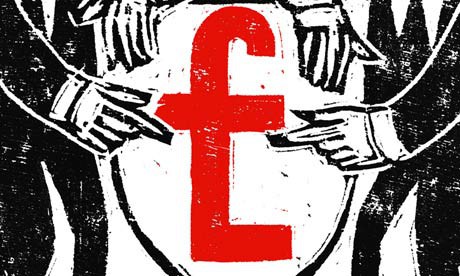
City of London’s Imperialist Designs on Russia
Yesterday the EU and US imposed additional sanctions on Russia, while 150 US troops landed in neighboring Estonia for military exercises. Two months after Ukraine’s democratically-elected President Viktor Yanukovych fled the country amidst the MI6/CIA/Mossad-orchestrated putsch in Kiev(http://deanhenderson.wordpress.com/2014/03/04/ukraine-falls-under-fascist-bankster-thumb/), the West continues to ramp up its aggression against Russia, despite repeated attempts at diplomacy by Russian President Vladimir Putin.
So what else is new?
The Rothschild-led City of London bankers have held grand imperialist designs on Russia’s rich natural resources for two centuries, always to be stymied by the odd nationalist czar or Stalinist. Putin thwarted their latest attempts when he jailed Israeli dual citizen Mikail Khodorkovsky and re-nationalized much of Russia’s energy sector. It is no coincidence that one Russian official sanctioned yesterday was Igor Sechin – president of Russian oil giant Rosneft, of which BP still owns a 20 % share.
(Excerpted from Chapter 17: Caspian Sea Oil Grab: Big Oil & Their Bankers…)
Unholy Alliance
While the international banking syndicates had always dealt with the Soviet Union, access to its vast oil resources remained limited until Ronald Reagan entered the White House in 1980, determined to splinter the Soviet Union into little pieces and open the country’s oilfields to the Four Horsemen. His point man in doing so was CIA Director Bill Casey, whose Roman Catholic Knights of Malta connections were thoroughly exploited.
The Vatican’s secretive Opus Dei “saintly Mafia” was behind the ascent of Polish Cardinal Karol Wojtyla to the Papacy. Wojtyla became Pope John Paul II and launched an Opus Dei/Vatican offensive to roll back Latin American liberation theology movements and East European communism. Fascism came naturally to Karol Wojtyla. During the 1940’s he was a chemical salesman for Nazi combine I. G. Farben. Wojtyla sold the Nazis the cyanide they used at their Auschwitz death camps. One of his best friends was Dr. Wolf Szmuness, mastermind of the 1978 Center for Disease Control Hepatitis B study in the US, through which the AIDS virus was introduced into the gay population. [722]
In 1982 Reagan met with Pope John Paul II. Prior to the meeting Reagan signed NSD-32, authorizing a wide range of economic, diplomatic and covert activities to “neutralize the USSR’s hold on Eastern Europe”. At the meeting the two agreed to launch a clandestine program to tear Eastern Europe away from the Soviets. Poland, the Pope’s country of origin, would be the key. Catholic priests, the AFL-CIO, the National Endowment for Democracy, the Vatican Bank and CIA would all be deployed.
The Vatican is the world’s largest owner of equities, using Swiss affiliate Banco di Roma per la Svizzera to conduct its more discretionary business. Italian fascist Benito Mussolini gave the Vatican generous tax exemptions which it still enjoys. Banco Ambrosiano’s P-2 leader Robert Calvi’s Grand Oriente Freemason’s supported reconciliation with the Vatican. Relations between the Vatican and the Freemasons were strained in the 11th century when the Greek Orthodox split from the Roman Catholics. Knights Templar and the Knights Hospitaler of St. John factions emerged. The latter was the Catholic faction. They changed their name to the Knights of Malta, after the island where they found refuge after their Crusades defeat, with help from the Vatican. Malta is a nexus of CIA/MI6/Mossad intrigues.
In the 13th century Pope Clement V, backed by France’s King Philip, charged the Protestant Knights Templars with heresy, citing their penchant for drug running, arms peddling, gambling and prostitution rings. These activities are what made the Templars “filthy rich”. Pope Clement made an example of Templar leader Jaques de Molay, whom he burned at the stake on Friday the 13th. [723] The Templars took their loot and fled to Scotland to found Scottish Rite Freemasonry. They bankrolled the House of Windsor, which controls Britain and presides at the apex of Freemasonry around the world. Masonic Lodge members enroll their children in the de Molay Society, which is named in honor of the toasted Templar pirate.
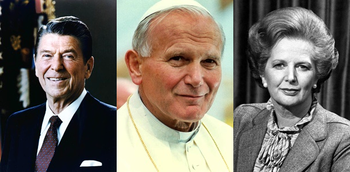 Calvi’s attempt to reconcile protestant and Catholic secret societies was a success. He became paymaster to the Polish Solidarity movement, while Nixon Treasury Secretary David Kennedy’s dirty Continental Illinois Bank served as conduit for CIA funds sent by Bank of Cicero asset Bishop Paul Marcinkus to fund Solidarity. [724] The Vatican teamed up with Europe’s Black Nobility, the Bilderbergers and CIA to launch the top-secret JASON Society and armed South American dictators to quash liberation theology. In 1978 when Pope John Paul II took power, the Vatican issued a commemorative stamp featuring an Egyptian pyramid and the Roshaniya all-seeing eye. [725] The Vatican and the Illuminati Brotherhood were reunited.
Calvi’s attempt to reconcile protestant and Catholic secret societies was a success. He became paymaster to the Polish Solidarity movement, while Nixon Treasury Secretary David Kennedy’s dirty Continental Illinois Bank served as conduit for CIA funds sent by Bank of Cicero asset Bishop Paul Marcinkus to fund Solidarity. [724] The Vatican teamed up with Europe’s Black Nobility, the Bilderbergers and CIA to launch the top-secret JASON Society and armed South American dictators to quash liberation theology. In 1978 when Pope John Paul II took power, the Vatican issued a commemorative stamp featuring an Egyptian pyramid and the Roshaniya all-seeing eye. [725] The Vatican and the Illuminati Brotherhood were reunited.
Reagan’s meetings with Pope John Paul II were an affirmation of this powerful new alliance, which would now focus on bringing the Soviet Union to its knees. Even before Reagan met with the Pope the CIA had groomed an informant at the Polish Ministry of Defense- Colonel Ryszard Kuklinski. Kuklinski reported to the Vatican and helped organize the Polish Solidarity Movement, led by the wealthy Radziwill family who had funded JFK assassins via Permindex. Most Solidarity leaders were old-money aristocrats.
The precursor to Solidarity was the National Alliance of Solidarists, a Russian/Eastern European fascist hit squad funded by RD/Shell’s Sir Henry Deterding and German Vickers Arms Corporation President Sir Basil Zacharoff. Sir Auckland Geddes of Rio Tinto Zinc, which bankrolled Francisco Franco’s fascist coup in Spain, also contributed to the Solidarists. Geddes’ nephew- Ford Irvine Geddes- was chairman of the Inchcape’s Peninsular & Orient Navigation Company from 1971-1972. [726]
The Solidarist’s US headquarters was the Tolstoy Foundation, which is housed in the same building as Julius Klein Associates, which ran guns to the murderous Haganah and Stern Gang Zionist death squads who stole Palestinian lands to found Israel. Klein was an M16 Permindex insider who helped plan the JFK hit.
The Solidarists stepchild, the Solidarity Movement, was touted in the Western media as a great Polish liberating force. With boatloads of CIA help, Solidarity toppled the Communist government in Warsaw. Their straw man Lech Walesa became President of Poland. In 1995 Walesa was defeated by former Communist leader Aleksander Kwasniewski. Walesa was rewarded for his boot licking with a job at Pepsico.
CIA Director Casey demanded a constant focus on Eastern Europe at CIA. Casey met often with Philadelphia Roman Catholic Cardinal John Krol to discuss the Solidarity Movement. He utilized his Knights of Malta connections, leaning heavily on Brother Vernon Walters, whose spook resume read like a James Bond novel. Walter’s latest incarnation was Reagan Ambassador at Large to Vatican Secretary of State Agostino Cardinal Casaroli. [727] By 1991 Walters was US Ambassador to the UN, where he successfully beat the drums of war against Iraq. He was in Fiji that same year, just prior to the overthrow of that left-leaning government.
Other Knights of Malta members involved in the Eastern European destabilization effort were Reagan NSA and Robert Vesco lieutenant Richard Allen, Reagan NSA Judge William Clark, Reagan Ambassador to the Vatican William Wilson and Zbigniew Brzezinski. Other prominent Knights of Malta members include Prescott Bush, Nixon Treasury Secretary William Simon, Nixon coup-plotter Alexander Haig, contra supporter J. Peter Grace and Venezuelan Rockefeller lieutenant Gustavo Cisneros.
The Reagan team had a five-part strategy in its efforts to destroy the Soviet Union. First, it would pursue the JASON Society’s Star Wars concept in an attempt to engage the Soviets in a space-based arms race which they knew Moscow could not afford. Second, the CIA would launch covert operations in Poland, Czechoslovakia and Hungary in attempts to overthrow those Soviet-allied governments. While Walesa emerged in Poland, poet Vaclev Havel became CIA white knight in Czechoslovakia. Like Walesa, Havel became unpopular and was soon tossed out of his puppet presidency.
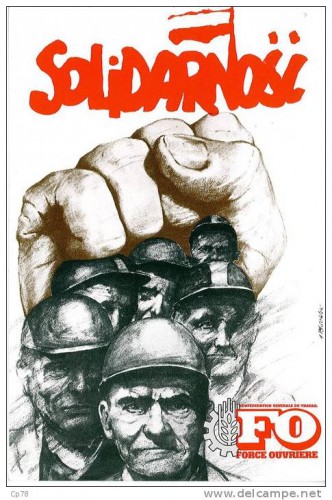 A component of the CIA destabilization program was to buy weapons from these East European nations to arm CIA-sponsored rebels in Nicaragua, Afghanistan, Angola and Mozambique, using BCCI and later BNL as conduits. The US also wanted to get their hands on the high-tech Soviet arsenal. Poland secretly sold the US an array of advanced Soviet weaponry worth $200 million. Romania did the same. Both countries saw their foreign debts reduced significantly. [728]
A component of the CIA destabilization program was to buy weapons from these East European nations to arm CIA-sponsored rebels in Nicaragua, Afghanistan, Angola and Mozambique, using BCCI and later BNL as conduits. The US also wanted to get their hands on the high-tech Soviet arsenal. Poland secretly sold the US an array of advanced Soviet weaponry worth $200 million. Romania did the same. Both countries saw their foreign debts reduced significantly. [728]
The third component of the Reagan strategy was to make financial aid to the Warsaw Pact contingent on economic privatization. Fourth, the US would blanket East European and Soviet airwaves with pro-Western propaganda, using fronts like Radio Liberty, Radio Free Europe and the Voice of America. The CIA financed local newspapers and magazines.
The Company got help inside the Soviet Union from its Mossad buddies in an effort spearheaded by media mogul and Mossad paymaster Robert Maxwell. When Maxwell threatened to reveal a meeting between KGB head Vladimir Kryuchkov and Mossad brass aboard his private yacht at which a coup against Mikhail Gorbachev was discussed, Mossad ordered a hit on Maxwell. On November 4, 1991 as he sailed around the Canary Islands Maxwell was assassinated by Israeli commandos. The mass exodus of Russian Jews to Israeli-occupied settlements in Palestine was part of the secret deal between Mossad and Kryuchkov, who is still serving time in a Moscow prison for his treasonous role in the Gorbachev coup. [729]
But it was the fifth and final component of Reagan’s strategy that had the Four Horsemen salivating. Reagan’s spooks initiated an economic warfare campaign against the Soviet Union, which included a freeze on technology transfers, counterfeiting of the Russian ruble and the sponsoring of separatist Islamist groups in the Soviet Central Asian Caucasus. The jihadis who were instructed to target a key transcontinental natural gas pipeline which the Soviets were building. The Soviets had more natural gas than any country on earth and saw the completion of this pipeline as their cash cow for the 21st century. [730] Big Oil wanted to milk that cow.
It’s the Oil, Stupid
When the Soviet Union’s last President Mikhail Gorbachev announced his perestroika and glasnost campaigns to privatize his country’s economy, he was aiding the Illuminati in destroying his country. Was Gorbachev duped, an unwitting accomplice, a CIA deep-cover agent or a mind-controlled Operation Presidio Temple of Set victim? Whatever the case, he played a key role in dismantling the Soviet Union.
The Soviets controlled not only the vast resources of their own nation, but Third World resources in Soviet-allied Comecon nations. Part of perestroika was to cease Soviet aid to these developing nations to ease the growing Soviet debt burden which, like the US debt, accrued largely from decades of Cold War military spending. The two superpowers’ debt was held by the same international banks, which now used this debt lever to pick a winner and to open Russian and Third World resource pools to their corporate tentacles. [731]
When the Berlin Wall fell and Gorbachev was overthrown in favor of IMF crony Boris Yeltsin, the Four Horsemen rushed to Moscow to begin making oil deals. Oil and natural gas had always been the Soviet’s main export and it remained so for the new Russia. In 1991, the country earned $13 billion in hard currency from oil exports. In 1992 Yeltsin announced that Russia’s world leading 9.2 billion barrel/day oil sector would be privatized.
Sixty percent of Russia’s Siberian reserves had never been tapped. [732] In 1993 the World Bank announced a $610 billion loan to modernize Russia’s oil industry- by far the largest loan in the bank’s history. World Bank subsidiary International Finance Corporation bought stock in several Russian oil companies and made an additional loan to the Bronfman’s Conoco for its purchase of Siberian Polar Lights Company. [733]
The main vehicle for international banker control over Russian oil was Lukoil, initially 20%-owned by BP Amoco and Credit Suisse First Boston, where Clinton Yugoslav envoy and Dayton Peace Accords architect Richard Holbrooke worked. Bush Sr. Attorney General Dick Thornburgh, who orchestrated the BNL cover-up, was now CS First Boston’s Chief Financial Officer. A handful of Zionist Russian oligarchs, collectively known as the Russian Mafia, owned the rest of Lukoil, which served as the Saudi ARAMCO of Russia for the Four Horsemen, a partner to Big Oil in projects throughout the country which involved truly staggering amounts of capital.
These included Sakhalin Islands projects known as Sakhalin I, a $15 billion Exxon Mobil venture; and Sakhalin II, a $10 billion deal led by Royal Dutch/Shell which included Mitsubishi, Mitsui and Marathon Oil as partners. Siberian developments were even larger. RD/Shell is a 24.5% partner in Uganskneftegasin, which controls a huge Siberian natural gas field. At Priobskoye, BP Amoco operates a $53 billion project. At Timan Pechora on the Arctic Ocean a consortium made up of Exxon Mobil, Chevron Texaco, BP Amoco and Norsk Hydo runs a $48 billion venture.
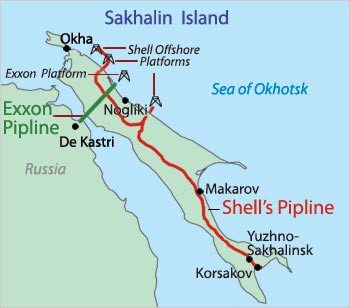 In November 2001 Exxon Mobil announced plans to invest another $12 billion in an oil and gas project in the Russian Far East. RD/Shell announced a $8.5 billion investment in its Sakhalin Islands concessions. BP Amoco made similar proclamations. [734] In 1994 Lukoil pumped 416 million barrels of oil, making it fourth largest producer in the world after RD/Shell, Exxon Mobil and part-owner BP Amoco. Its fifteen billion barrels in crude reserves rank second in the world to Royal Dutch/ Shell. [735]
In November 2001 Exxon Mobil announced plans to invest another $12 billion in an oil and gas project in the Russian Far East. RD/Shell announced a $8.5 billion investment in its Sakhalin Islands concessions. BP Amoco made similar proclamations. [734] In 1994 Lukoil pumped 416 million barrels of oil, making it fourth largest producer in the world after RD/Shell, Exxon Mobil and part-owner BP Amoco. Its fifteen billion barrels in crude reserves rank second in the world to Royal Dutch/ Shell. [735]
The Soviet Caucasus, with encouragement from Langley, soon split from Russia. The map of Central Asia was re-written as Kazakhstan, Uzbekistan, Tajikistan, Turkmenistan, Kyrgyzstan, Armenia, Azerbaijan, Ukraine and Georgia all declared their independence. The pipeline Reagan ordered targeted carried Soviet natural gas east to the North Pacific port of Vladivostok and west to the Black Sea port of Novorrossiysk from the world’s richest known natural gas fields lying beneath and abutting the shoreline of the Caspian Sea, which lies in the heart of Caucasus.
The Four Horsemen coveted this resource more than any in the world. They wanted to build their own private pipelines once they got their hands on the Caspian Sea natural gas fields, which also contain an estimated 200 billion barrels of crude oil. Oil industry privatizations were quickly announced in the new Central Asian Republics which had, by virtue of their independence, taken control of the vast Caspian Sea oil and gas reserves. By 1991 Chevron was holding talks with Kazakhstan. [736]
The Central Asian Republics became the largest recipients of USAID aid, as well as ExIm Bank, OPIC and CCC loans. Azerbaijan, Turkmenistan and Kazakhstan were especially favored. These countries control the shoreline of the Caspian Sea, along with Russia and Iran. In 1994 Kazakhstan received $311 million in US aid and another $85 million to help dismantle Soviet-era nuclear weapons. President Clinton met with Kazakhstan President Nursultan Nazarbayev. They signed an array of agreements ranging from disarmament deals to space research cooperation. Kazakhstan, with an estimated 17.6 billion barrels of oil reserves, had been a strategic part of the Soviet nuclear weapons grid and was home to the Soviet space program.
The two leaders also signed an agreement providing investment protection for US multinationals. The Free Trade Institute and US Chamber of Commerce sent officials to train Kazakhs in the finer arts of global capitalism. The Four Horsemen moved in swiftly. Chevron Texaco laid claim to the biggest prize- the $20 billion Tenghiz oilfield- then grabbed another gusher at Korolev. Exxon Mobil signed a deal to develop an offshore concession in the Caspian. [737] Tengizchevroil is 45%-owned by Chevron Texaco and 25%-owned by Exxon Mobil. [738] President George W. Bush’s NSA and later Secretary of State Condaleeza Rice, an expert on Central Asia, sat on the board at Chevron alongside George Schultz from 1989-1992. She even had an oil tanker named after her.
Across the Caspian Sea, Azerbaijan was receiving hundreds of millions of dollars in US aid. BP Amoco led a consortium of seven oil giants who spent an initial $8 billion to develop three concessions off the coast of the capital Baku- historic base camp of Big Oil in the region. [739] BP Amoco and Pennzoil- recently acquired by Royal Dutch/Shell- took control of the Azerbaijan Oil Company, whose board of directors included former Bush Sr. Secretary of State James Baker.
In 1991 Air America super spook Richard Secord showed up in Baku under the cover of MEGA Oil. [740] Secord & Company did military training, sold Israeli arms, passed “brown bags filled with cash” and shipped in over 2,000 Islamist fighters from Afghanistan with help from Gulbuddin Hekmatyar. Afghan heroin began flooding into Baku. Russian economist Alexandre Datskevitch said of 184 heroin labs that police discovered in Moscow in 1991, “Every one of them was run by Azeris, who use the proceeds to buy arms for Azerbaijan’s war against Armenia in Nagorno-Karabakh”. [741]
A Turkish intelligence source claims that Exxon and Mobil were behind the 1993 coup against elected Armenian President Abulfaz Elchibey. Secord’s Islamists helped. Osama bin Laden set up an NGO in Baku as a base for attacking the Russians in Chechnya and Dagestan. A more pliant President Heidar Aliyev was installed. In 1996, at the behest of Amoco’s president, he was invited to the White House to meet President Clinton- whose NSA Sandy Berger held $90,000 worth of Amoco stock. [742]
Armenian separatists backed by the CIA took over the strategic Armenian regions of Nagorno-Karabakh and Nakhnichevan which border Turkey and Iran. When Turkish President Turgut Ozal mentioned intervention in Nakhnichevan to back the Azerbaijani seizure, Turkish Premier Suleyman Demirel quickly played down the statement from the key US ally. These two regions are critical to Big Oil plans to build a pipeline from the Caspian Sea across Turkey to the Russian Black Sea port of Novorrossiysk. The same route is utilized by Turkey’s Gray Wolves mafia in their Central Asia to Europe heroin endeavors. When Gray Wolf Mehmet Ali Agca tried to assassinate Pope John Paul II in 1981, the CIA used its Gladio strategy, trying to pin it on Bulgaria’s Communist Lukashenko government.
Lukoil owns 26% of the Russian Black Sea port at Novorrossiysk. Its president Vayit Alekperov wanted to build the Caspian pipeline through Grozny in Chechnya, while the Four Horsemen preferred the route through Turkey. CIA support for Armenian separatists and Chechen Islamist rebels ensured chaos in Grozny. Alekperov finally agreed to the Turkish route.
In 2003 the Defense Department proposed a $3.8 million military training grant for Azerbaijan. Later they admitted it was to protect US access to oil. As author Michael Klare put it, “Slowly but surely, the US military is being converted into a global oil-protection service”. [743]
Turkmenistan, which borders the Caspian Sea on the southeast, is a virtual gas republic, containing massive deposits of natural gas. It also has vast reserves of oil, copper, coal, tungsten, zinc, uranium and gold. The biggest gas field is at Dauletabad in the southeast of the country, near the Afghan border. The Unocal-led Centgas set about building a pipeline which would connect the oil fields around Chardzhan to the Siberian oilfields further north. More crucial to Centgas was a gas pipeline from Dauletabad across Afghanistan and Pakistan to the Indian Ocean. [744] Advisers to the project included Henry Kissinger. Unocal is now part of Chevron.
With the Four Horsemen firmly in charge of Caspian Sea reserves, the Caspian Pipeline Consortium was born. Chevron Texaco took a 15% stake with the other three Horsemen and Lukoil splitting the rest. Pipeline security was provided by the Israeli firm Magal Security Systems, which is connected to Mossad. Azerbaijan and Turkmenistan have especially cozy relations with Israel via Special Ambassador Yusef Maiman, who is president of the Israeli Mehrav Group. Mehrav is involved in a project in Turkey to divert water from the upper Tigres and Euphrates Rivers to the southeast part of Turkey and away from Iraq. [745] The Caspian pipeline was built by Bechtel in partnership with GE and Wilbros Group. The pipeline quietly began moving oil and gas in November 2001, just two months after 911.
Bechtel also built the oilfield infrastructure at Tengiz for Chevron Texaco. In 1995 Bechtel led a USAID-funded consortium to restructure the energy sectors of eleven Central and Eastern European nations in line with IMF mandates. Bechtel received a massive contract to upgrade Russia’s many ailing aluminum smelters in tandem with Pechiney. Lukoil contracted with New Jersey-based ABB Lummus Crest (formed when engineering giants Asea Braun Boveri and Lummis Crest merged) to build a $1.3 billion refinery at the Novorrossysk port and to do a $700 million upgrade on its refinery at Perm.
The Bush Jr. Administration now planned a series of additional Caspian Sea pipelines to compliment the Tenghiz-Black Sea route. A Baku-Tblisi-Ceyhan pipeline was built by a Four Horsemen consortium led by BP Amoco. The law firm representing the BP-led consortium is James Baker’s family law firm- Baker Botts. The BP Amoco pipeline runs the length of the country of Georgia through its capital Tblisi.
In February 2002 the US announced plans to send 200 military advisers and attack helicopters to Georgia to “root our terrorism”. [746] The deployment was a smokescreen for pipeline protection. In September 2002 Russian Foreign Minister Igor Ivaniov accused Georgia of harboring Chechen rebels. In October 2003 Georgian President Eduard Schevardnadze was forced to step down in a bloodless revolution. According to a December 11, 2003 article on the World Socialist Party website, CIA sponsored the coup.
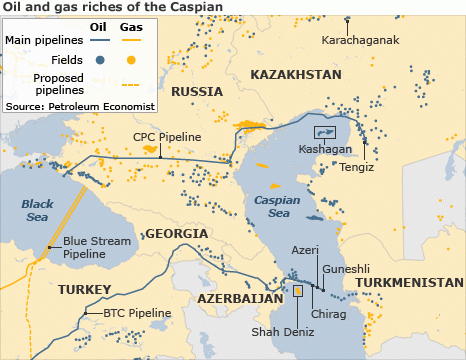
In September 2004 hundreds of Russian school children were killed when Chechen separatists seized their school building. Russian President Vladimir Putin said of the incident, “Certain political circles in the West want to weaken Russia, just like the Romans wanted to weaken Carthage.” He accused “foreign intelligence services” of complicity in the attacks. His adviser Aslanbek Aslakhanov went further, stating on Russian Channel 2 News, “The men had their conversations not within Russia, but with other countries. They were led on a leash. Our self-styled friends have been working for several decades to dismember Russia… (they are the) puppeteers and are financing terror.” Russia’s KM News ran the headline, “School Seizure was Planned in Washington and London”. [747]
Lukoil epitomizes the corruption so rampant in Russia since the Soviet collapse. Bribery is the norm. Lukoil has given luxury jets to the mayor of Moscow, the head of Gazprom (the state-owned natural gas monopoly) and Kazakhstan President Nazarbayev. In the mid-1990’s Lukoil announced that it would sell another 15 % stake to foreign stockholders through its largest owner and financial adviser CS First Boston and the Bank of New York. [748] In 2002 they announced plans to sell off another big stake.
According to Kurt Wulff of the oil investment firm McDep Associates, the Four Horsemen, romping in their new Far East pastures, saw asset increases from 1988-1994 as follows: Exxon Mobil- 54%, Chevron Texaco- 74%, Royal Dutch/Shell- 52% and BP Amoco- 54%. The Horsemen had more than doubled their collective assets in six short years. This quantum leap in Anglo-American global power had everything to do with the takeover of the old Soviet oil patch and the subsequent impoverishment of its birthright owners.
[722] Behold a Pale Horse. William Cooper. Light Technology Publishing. Sedona, AZ. 1991.
[723] The Robot’s Rebellion: The Story of the Spiritual Renaissance. David Icke. Gateway Books. Bath, UK. 1994. p.94
[724] Hot Money and the Politics of Debt. R.T. Naylor. The Linden Press/Simon & Schuster. New York. 1987. p.78
[725] Ibid. p.165
[726] Dope Inc.: The Book that Drove Kissinger Crazy. The Editors of Executive Intelligence Review. Washington, DC. 1992
[727] “The Unholy Alliance”. Carl Bernstein. Time. 2-24-92. p.28
[728] “US Obtained Soviet Arsenal from Poland”. Eugene Register-Guard. 2-13-94
[729] The Other Side Of Deception. Victor Ostravsky. HarperCollins Publishers. New York. 1994.
[730] Bernstein. p.28
[731] “The Dismantling of the Soviet Union”. Peter Symon. Philippine Currents. November/December 1991.
[732] “Drilling for a Miracle”. Fred Coleman. US News & World Report. 12-7-92. p.54
[733] Evening Edition. National Public Radio. 6-18-93
[734] “Exxon’s Russian Oil Deal Makes Other Firms Feel Lucky”. Wall Street Journal. 12-13-01
[735] “The Seven Sisters Have a Baby Brother”. Paul Klebnikov. Forbes. 1-22-96. p.70
[736] Taliban: Militant Islam, Oil and Fundamentalism in Central Asia. Ahmed Rashid. Yale University Publishing. New Haven, CT. 2001. p.145
[737] “Christopher Promises Aid to Oil-Rich Kazakhstan”. AP. Northwest Arkansas Morning News. 10-24-93
[738] 10K Filings to SEC. Exxon Mobil and Chevron Corporations. 3-28-01
[739] “The Quietly Determined American”. Paul Klebnikov. Forbes. 10-24-94. p.48
[740] Azerbaijan Diary: A Rogue Reporter’s Adventures in a Oil-Rich, War-Torn, Post- Soviet Republic. Thomas Goltz. M.E. Sharpe. Armonk, NY. 1999. p.272
[741] “al-Qaeda, US Oil Companies and Central Asia”. Peter Dale Scott. Nexus. May-June, 2006. p.11-15
[742] See No Evil: The True Story of a Ground Soldier in the CIA’s War on Terrorism. Robert Baer. Crown. New York. 2002. p.243-244
[743] Blood and Oil: The Dangers and Consequences of America’s Growing Dependency on Imported Petroleum. Michael T. Klare. Metropolitan/Henry Holt. 2004. p.6-7
[744] Escobar. Part I
[745] “The Roving Eye: Pipelineistan, Part II: The Games Nations Play”. Pepe Escobar. Asia Times Online. 1-26-02
[746] “Wolf Blitzer Reports”. CNN. 2-27-02
[747] “Paranotes: Russian School Seige Conspiracy”. Al Hidell. Paranoia. Issue 37. Winter 2005.
[748] Klebnikov. 1-22-96. p.72
Dean Henderson is the author of five books: Big Oil & Their Bankers in the Persian Gulf: Four Horsemen, Eight Families & Their Global Intelligence, Narcotics & Terror Network, The Grateful Unrich: Revolution in 50 Countries, Das Kartell der Federal Reserve, Stickin’ it to the Matrix & The Federal Reserve Cartel. You can subscribe free to his weekly Left Hook column @ www.deanhenderson.wordpress.com
00:05 Publié dans Actualité, Affaires européennes | Lien permanent | Commentaires (0) | Tags : russie, caucase, azerbaïdjan, arménie, turkménistan, zone caspienne, europe, asie, affaires européennes, affaires asiatiques, politique internationale, géopolitique, hydrocarbures, gaz, gaz naturel, gazoducs, pétrole, city of london, bourse, économie |  |
|  del.icio.us |
del.icio.us |  |
|  Digg |
Digg | ![]() Facebook
Facebook
dimanche, 10 mai 2009
La peur de la grippe porcine

La peur de la grippe porcine: Une mine d’or sur les marchés boursiers pour les sociétés de biotechnologie « politiquement connectés »
Soutenu par la désinformation des médias, une atmosphère de peur et d’intimidation s’est propagée. Des situations « d’urgence » sanitaires ont été déclarées dans différentes régions des États-Unis.
Les médicaments les plus recherchés contre la grippe sont le Tamiflu et le Relenza. La course aux traitements a été déclenchée par le gouvernement des États-Unis en rendant disponible ses réserves nationales « pour s’assurer que les fournisseurs de soins de santé soient prêts à toute éventuelle intensification. »
Le Tamiflu est fabriqué par la géante société pharmaceutique suisse Hoffman-La Roche pour le compte d’une entreprise de biotechnologie basée aux États-Unis, Gilead Sciences Inc. Alors que le médicament est fabriqué par Roche, il a été développé par Gilead Sciences Inc qui en détient les droits de propriété intellectuelle.
L’ancien secrétaire à la Défense, Donald Rumsfeld, était l’un des principaux actionnaires de Gilead Sciences Inc. En 1997, Rumsfeld a été nommé président de Gilead Sciences Inc, un poste qu’il a occupé jusqu’à ce qu’il devienne secrétaire de la Défense dans l’administration Bush en 2001. Rumsfeld était membre du conseil d’administration de Gilead en 1987.
Dans un reportage publié au plus fort de la crise de la grippe aviaire en 2005, Fortune Magazine a décrit Gilead comme l’une des entreprises les plus politiquement connectées dans le secteur de l’industrie biotechnologique. Les intérêts et/ou les avoirs de Rumsfeld dans Gilead à la suite de sa démission en 2006, ne sont pas connus.
Les valeurs boursières
Le prix de l’action de Gilead sur le New York Stock Exchange (NYSE) a augmenté considérablement depuis l’annonce de l’épidémie de grippe porcine au Mexique.
« Le gouvernement étasunien a dégagé un quart de ses stocks de médicaments après avoir déclaré une situation d’urgence sanitaire nationale avec 40 cas confirmés en laboratoire de grippe porcine. Sept de ces cas sont en Californie, 28 dans la ville de New York, deux au Texas et deux au Kansas, et un dans l’Ohio.
Le Mexique a augmenté le nombre soupçonné de victimes depuis l’apparition de la grippe à 149 personnes – il est confirmé que 20 cas sont dus à la grippe porcine - et ils ont fermé toutes les écoles jusqu’au 6 mai. Près de 2,000 personnes y ont été hospitalisées avec de graves cas de pneumonie.
Les antiviraux sont des médicaments actifs d’ordonnance contre le virus de la grippe, y compris les virus de grippe porcine, selon les Centres de contrôle de la maladie (Centers for Disease Control). Les virus de grippe porcine de type A détectés aux États-Unis et au Mexique semblent être résistants à deux antiviraux, soit l’amantadine et la rimantadine, mais les tests de laboratoire indiquent que le virus est sensible au Tamiflu, également connu sous le nom de l’oseltamivir, et au Relenza, qui est connu sous le nom de zanamivir.
Le Tamiflu, un antiviral oral approuvé aux États-Unis pour traiter et prévenir les infection au virus de la grippe de type A et B chez des personnes âgées d’un an et plus, est vendu par F. Hoffmann-La Roche Ltd, qui verse des redevances liées à la vente de ce produit à Gilead. Roche a déclaré qu’il a 3 millions de boîtes de Tamiflu en réserve - une partie des 5 millions de traitements donnés à l’organisme de santé des Nations Unies en 2006 - et qu’il peut fournir le médicament partout dans les 24 heures. » (San Francisco Business Times, le 27 avril 2009)
Article original en anglais : Swine Flu Scare: Stock Market Bonanza for “Politically Connected” BioTech Companies, publié le 29 avril 2009.
Traduction de Dany Quirion.
Michel Chossudovsky est directeur du Centre de recherche sur la mondialisation et professeur d’économie à l’Université d’Ottawa. Il est l’auteur de Guerre et mondialisation, La vérité derrière le 11 septembre et de la Mondialisation de la pauvreté et nouvel ordre mondial (best-seller international publié en 12 langues).
Source : Égalité & Réconciliation
Article printed from :: Novopress Québec: http://qc.novopress.info
URL to article: http://qc.novopress.info/?p=5048
00:40 Publié dans Actualité | Lien permanent | Commentaires (0) | Tags : grippe, grippe porcine, mexique, épidémie, pandémie, médecine, pharmacie, manipulations médiatiques, bourse, spéculation |  |
|  del.icio.us |
del.icio.us |  |
|  Digg |
Digg | ![]() Facebook
Facebook
samedi, 22 novembre 2008
Soldats américains: perdu en bourse l'argent gagné au combat
| Des soldats américains en Irak ont perdu en bourse l'argent gagné au combat |
| Publié le 10 novembre 2008 sur http://www.egaliteetreconciliation.fr
| |
 En allumant son ordinateur ces dernières semaines, le lieutenant-colonel Mark Grabski ne consultait pas les derniers sondages sur la présidentielle américaine mais contemplait l'étendue de ses pertes sur des sites financiers. "Mes favoris comprenaient la liste des sociétés dans lesquelles ma caisse de retraite complémentaire investissait. Et tous les jours, je voyais leurs cours s'effondrer", dit ce militaire en poste sur la base américaine de Speicher, au nord de Bagdad. "J'ai perdu actuellement des dizaines de milliers de dollars" dans la crise financière, assure cet officier de 31 ans, chargé de l'inspection générale de la base. "Le tiers de mon salaire est versé sur le thrift savings program", une retraite complémentaire privée réservée aux fonctionnaires et militaires américains. "J'ai perdu 30% de cette retraite dans la crise financière", assure-t-il. Cette retraite privée s'ajoute à la pension de l'armée, qui n'a pas pâti de la crise, et qui atteint 50% du salaire des militaires qui ont servi 20 ans, 75% pour ceux qui ont 30 ans d'ancienneté. A Camp Speicher, la crise a souvent éclipsé la campagne présidentielle. Le cyclone financier a été d'autant plus cruellement ressenti qu'il s'agit pour ces soldats d'argent gagné à force de patrouilles, parfois de combats, dans la poussière de Tikrit, un fief de l'ancien dictateur irakien Saddam Hussein. L'impact de la crise sur les portefeuilles et les retraites privées des soldats américains déployés en Irak est difficile à mesurer. Les officiers, plus âgés et soucieux de leur avenir, ont sûrement plus pâti du tourbillon des places boursières. Mais les jeunes recrues ne sont pas épargnées. "Nous avons encouragé les jeunes soldats à souscrire à des retraites privées. Quand un soldat arrive au Koweït, avant d'être déployé en Irak, c'est même un des premiers prospectus qu'on lui donne", souligne le lieutenant-colonel Grabski. Pour le commandant Daniel Meyers, qui travaille au commandement central de l'armée américaine pour le nord de l'Irak, les pertes sont plus limitées, "3.100 dollars". "Je ne verse que 8% de mon salaire (environ 5.000 dollars en Irak, ndlr), mais c'est une somme pour moi", dit-il. En regard, un simple soldat déployé en Irak touche environ 2.000 dollars par mois. Dans le centre de commandement, au pire de la crise, les analystes financiers ont succédé aux joueurs de base-ball du "World Series" sur les écrans de télévision. "Tout le monde suivait la crise. Quand la cloche (de fin de séance à Wall Street, ndlr) retentissait, j'étais traumatisé. Je ne dormais plus que deux heures par nuit", se souvient l'officier, originaire de l'Etat de New York. Ce militaire de 32 ans, dont la division est basée en Allemagne, attend peu du prochain président américain. "Sauf peut-être si (Barack) Obama nomme quelqu'un à l'instance de régulation des marchés ou si le Congrès adopte des lois de régulation", dit-il. Depuis, le lieutenant-colonel Grabski, comme le commandant Meyers, attendent simplement que le marché remonte pour pouvoir espérer récupérer leur mise. D'autres soldats, plus proches de la retraite, ont en revanche beaucoup perdu ces dernières semaines. "Je suis à trois ans de la retraite et j'ai perdu la moitié de mes fonds", peste un sergent originaire d'Alabama sous couvert de l'anonymat. "Je n'accuse personne, en signant le contrat, je savais que ces placements étaient risqués", dit cet homme d'une cinquantaine d'années, dont bientôt 30 dans l'armée. "Mais quand je pars en mission, il m'arrive de penser que j'étais tout près d'une belle retraite. Quelques mois à tirer avant de toucher enfin la retraite de l'armée, plus ma complémentaire privée. Je ne m'imaginais pas continuer à travailler dans le civil après 30 ans de carrière militaire", regrette-t-il. Source : http://news.tageblatt.lu |
00:40 Publié dans Actualité | Lien permanent | Commentaires (0) | Tags : guerre, irak, etats-unis, crise, bourse, finances, usure |  |
|  del.icio.us |
del.icio.us |  |
|  Digg |
Digg | ![]() Facebook
Facebook


